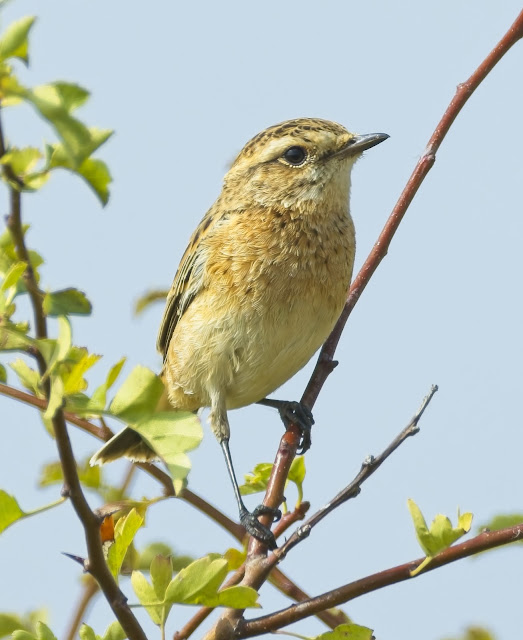Elmley, early Sept 2024
Brief but close views of a Bittern at Elmley, plus Cattle Egret, Whinchat and even a slightly distant Kingfisher from the drive to the car park
Whinchat
The Whinchat (Saxicola rubetra) is a small, migratory passerine bird found in the UK, favoring open habitats such as upland meadows, heathlands, and grasslands with scattered shrubs during the breeding season. The Whinchat is often spotted perched on low shrubs or tall plants, using elevated viewpoints to catch insects. In the UK, the breeding population of Whinchats is estimated to be around 47,000 pairs. This species is a long-distance migrant, wintering in sub-Saharan Africa, with individuals departing the UK in late summer and returning in spring to breed.
Cattle Egret
The Cattle Egret (Bubulcus ibis) is a white heron increasingly seen in the UK, primarily in wetland areas, farmland, and around grazing livestock, with which it has a close ecological relationship. Distinguished by its compact size, yellow bill, and in breeding plumage, buff-colored patches on its head, chest, and back, the Cattle Egret often feeds on insects and small animals disturbed by cattle or other large mammals. The species has expanded its range northwards in recent decades, and small breeding populations have now been established in the UK, particularly in southern England. The UK population is estimated to be around 100 breeding pairs, although numbers fluctuate annually. Cattle Egrets in the UK are partially migratory, with some birds remaining year-round while others move to milder regions in Europe or North Africa during the winter months.
Bittern
The Bittern (Botaurus stellaris) is a rare and elusive heron species found in the UK, primarily inhabiting reed beds in wetlands. It is known for its distinctive booming call, often heard during the breeding season, and its excellent camouflage with streaked brown plumage that allows it to blend seamlessly into the reeds. In the UK, the Bittern population has been recovering in recent years, with an estimated 200 breeding males. Bitterns in the UK are largely resident, but some individuals, particularly those from continental Europe, may migrate to the UK in winter to escape harsher conditions. Conservation efforts, including habitat restoration and reed bed management, have been crucial in supporting the resurgence of this once critically endangered species.
Kingfisher
A first, for me, at Elmley!















Comments
Post a Comment